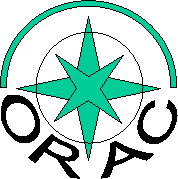ORAC-DR is a general-purpose automatic data-reduction pipeline environment. This document
describes its use to reduce optical imaging data collected on the Las Cumbres Observatory Global
Telescope Network (LCOGT).
[1] Brown, T. M. et al., 2013, Las Cumbres Observatory Global Telescope Network, PASP, 125,
1031–1055
[2] Eastman, J., Siverd, R. & Gaudi, B. S., 2010, Achieving Better Than 1 Minute Accuracy in
the Heliocentric and Barycentric Julian Dates, PASP, 122, 935
[3] Petit, G. & Luzum, B. (eds), 2010, IERS Conventions (2010), IERS Technical Note No. 36,
Chap. 10
[4] Moisson, X. & Bretagnon, P., 2001, Celestial Mechanics and Dynamical Astronomy,
Volume 80, 3/4, 205–213
[5] Fienga, A., Laskar, J., Kuchynka, P., Manche, H., Desvignes, G., Gastineau, M., Cognard,
I., Theureau, G., 2011, The INPOP10a planetary ephemeris and its applications in fundamental
physics, Celestial Mechanics and Dynamical Astronomy, Volume 111, Issue 3, pp.363-385
DOI: 10.1007/s10569-011-9377-8
[6] Shirai, T. & Fukushima, T., 2001, Construction of a new forced nutation theory of the nonrigid
Earth , AJ, 121, 3270–3283.
[7] Zacharias, N., Finch, C., Girard, T., Hambly, N., Wycoff, G., Zacharias, M. I., Castillo, D.,
Corbin, T., DiVittorio, M., Dutta, S., Gaume, R., Gauss, S., Germain, M., Hall, D., Hartkopf,
W., Hsu, D., Holdenried, E., Makarov, V., Martinez, M., Mason, B., Monet, D., Rafferty, T.,
Rhodes, A., Siemers, T., Smith, D., Tilleman, T., Urban, S., Wieder, G., Winter, L., Young, A.,
2010, The Third US Naval Observatory CCD Astrograph Catalog (UCAC3), AJ, 139, 2184–2199.
[8] Skrutskie, M. F., Cutri, R. M., Stiening, R., Weinberg, M. D., Schneider, S., Carpenter,
J. M., Beichman, C., Capps, R., Chester, T., Elias, J., Huchra, J., Liebert, J., Lonsdale, C.,
Monet, D. G., Price, S., Seitzer, P., Jarrett, T., Kirkpatrick, J. D., Gizis, J. E., Howard, E.,
Evans, T., Fowler, J., Fullmer, L., Hurt, R., Light, R., Kopan, E. L., Marsh, K. A., McCallon,
H. L., Tam, R., Van Dyk, S., Wheelock, S., The Two Micron All Sky Survey (2MASS), 2006, AJ,
131, 1163–1183.
[9] Monet, D. G., Levine, S. E., Canzian, B., Ables, H. D., Bird, A. R., Dahn, C. C., Guetter,
H. H., Harris, H. C., Henden, A. A., Leggett, S. K., Levison, H. F., Luginbuhl, C. B.,
Martini, J., Monet, A. K. B., Munn, J. A., Pier, J. R., The USNO-B Catalog, 2003, AJ, 125,
984–993.
[10] Høg, E., Fabricius, C., Makarov, V. V., Bastian, U., Schwekendiek, P., Wicenec, A.,
Urban, S., Corbin, T., Wycoff, G., Construction and verification of the Tycho-2 Catalogue, 2000,
A&A, 357,367–386.

